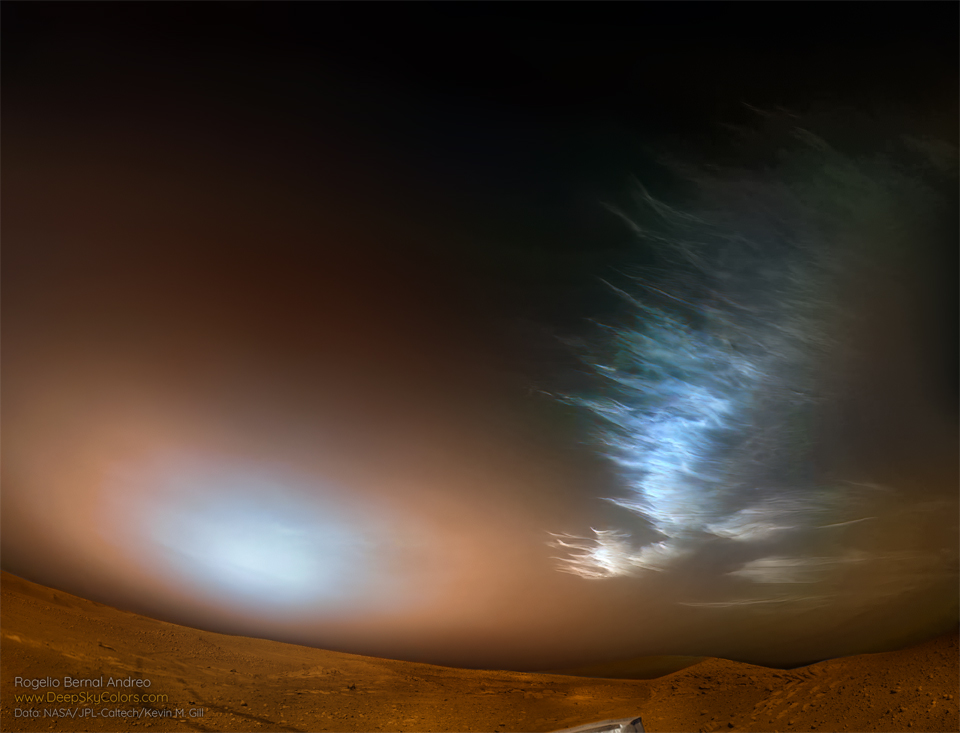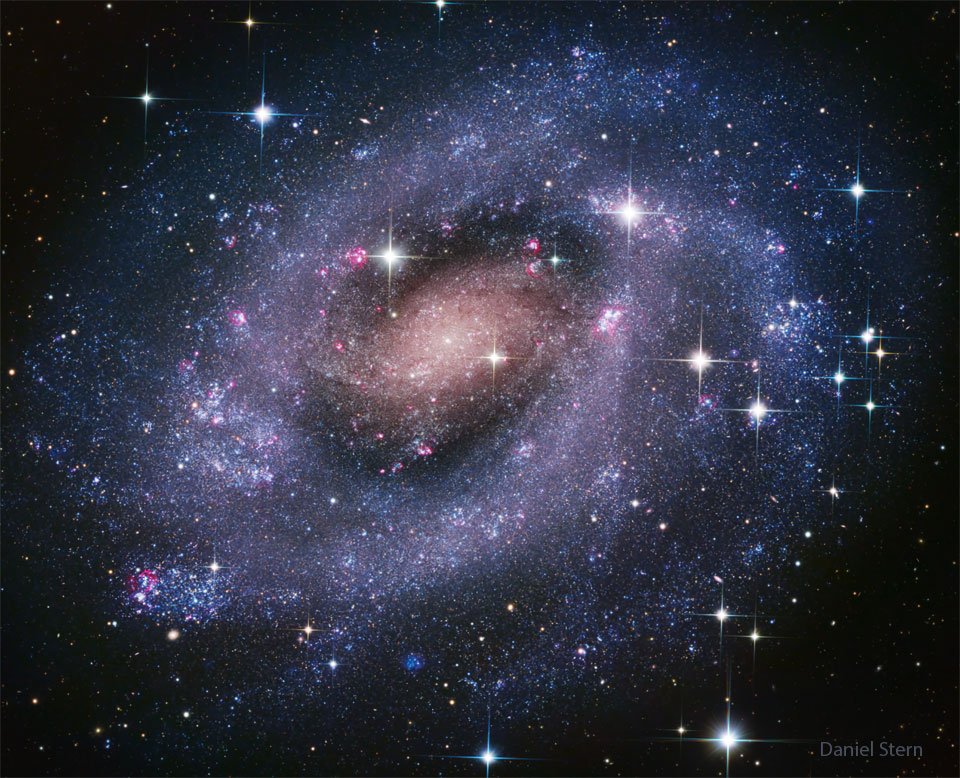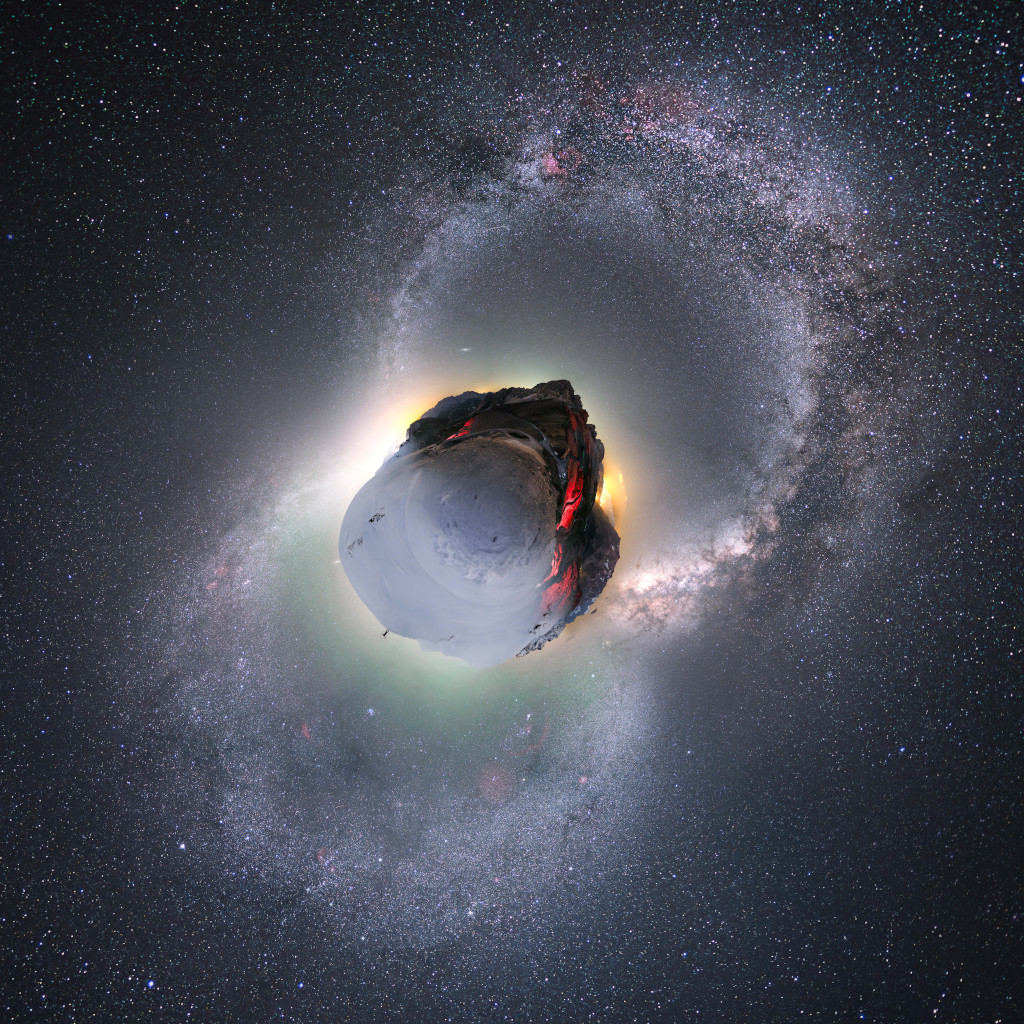Nombre total de pages vues
04/12/2024
ASTRONOMIE - La Voie Lactée au Lac de Geroldsee en Allemagne
ASTRONOMY - Driveway Analemma
2024 December 4
Video Credit & Copyright: Nick Wright
Explanation: Does the Sun return to the same spot on the sky every day? No. A more visual answer is an analemma, a composite of sky images taken at the same time and from the same place over a year. At completion, you can see that the Sun makes a figure 8 on the sky. The featured unusual analemma does not, however, picture the Sun directly: it was created by looking in the opposite direction. All that was required was noting where the shadow of an edge of a house was in the driveway every clear day at the same time. Starting in March in Falcon, Colorado, USA, the photographer methodically marked the shadow's 1 pm location. In one frame you can even see the photographer himself. Although this analemma will be completed in 2025, you can start drawing your own driveway analemma -- using no fancy equipment -- as soon as today.
03/12/2024
ASTRONOMIE - La Voie Lactée à Chichén Itzá (Mexique)
ASTRONOMY - Ice Clouds over a Red Planet
2024 December 3
Image Credit: NASA, JPL-Caltech, Kevin M. Gill; Processing: Rogelio Bernal Andreo
Explanation: If you could stand on Mars -- what might you see? You might look out over a vast orange landscape covered with rocks under a dusty orange sky, with a blue-tinted Sun setting over the horizon, and odd-shaped water clouds hovering high overhead. This was just the view captured last March by NASA's rolling explorer, Perseverance. The orange coloring is caused by rusted iron in the Martian dirt, some of which is small enough to be swept up by winds into the atmosphere. The blue tint near the setting Sun is caused by blue light being preferentially scattered out from the Sun by the floating dust. The light-colored clouds on the right are likely composed of water-ice and appear high in the Martian atmosphere. The shapes of some of these clouds are unusual for Earth and remain a topic of research.
02/12/2024
ASTRONOMIE - La Voie Lactée au Tyrol
ASTRONOMY - NGC 300: A Galaxy of Stars
2024 December 2
Image Credit & Copyright: Daniel Stern
Explanation: This galaxy is unusual for how many stars it seems that you can see. Stars are so abundantly evident in this deep exposure of the spiral galaxy NGC 300 because so many of these stars are bright blue and grouped into resolvable bright star clusters. Additionally, NGC 300 is so clear because it is one of the closest spiral galaxies to Earth, as light takes only about 6 million years to get here. Of course, galaxies are composed of many more faint stars than bright, and even more of a galaxy's mass is attributed to unseen dark matter. NGC 300 spans nearly the same amount of sky as the full moon and is visible with a small telescope toward the southern constellation of the Sculptor. The featured image was captured in October from Rio Hurtado, Chile and is a composite of over 20 hours of exposure.
01/12/2024
ASTRONOMIE - La Voie Lactée et les champs de lavande
30/11/2024
ASTRONOMY - Winter and Summer on a Little Planet
2024 November 30
Image Credit & Copyright: Camille Niel
Explanation: Winter and summer appear to come on a single night to this stunning little planet. It's planet Earth of course. The digitally mapped, nadir centered panorama covers 360x180 degrees and is composed of frames recorded during January and July from the Col du Galibier in the French Alps. Stars and nebulae of the northern winter (bottom) and summer Milky Way form the complete arcs traversing the rugged, curved horizon. Cars driving along on the road during a summer night illuminate the 2,642 meter high mountain pass, but snow makes access difficult during winter months except by serious ski touring. Cycling fans will recognize the Col du Galibier as one of the most famous climbs in planet Earth's Tour de France.
29/11/2024
ASTRONOMIE - La Voie Lactée au Cervin - Suisse
ASTRONOMY - IRAS 04302: Butterfly Disk Planet Formation
2025 September 8 IRAS 04302: Butterfly Disk Planet Formation Image Credit: NASA , ESA , CSA , Webb ; Processing: M. Villenave et al....

-
2022 September 26 All the Water on Planet Earth Illustration Credit: Jack Cook, Adam Nieman, Woods Hole Oceanographic Institution ; Data ...
-
2021 August 11 Mammatus Clouds over Saskatchewan Image Credit & Copyright: Michael F Johnston Explanation: When do cloud bottoms appe...







